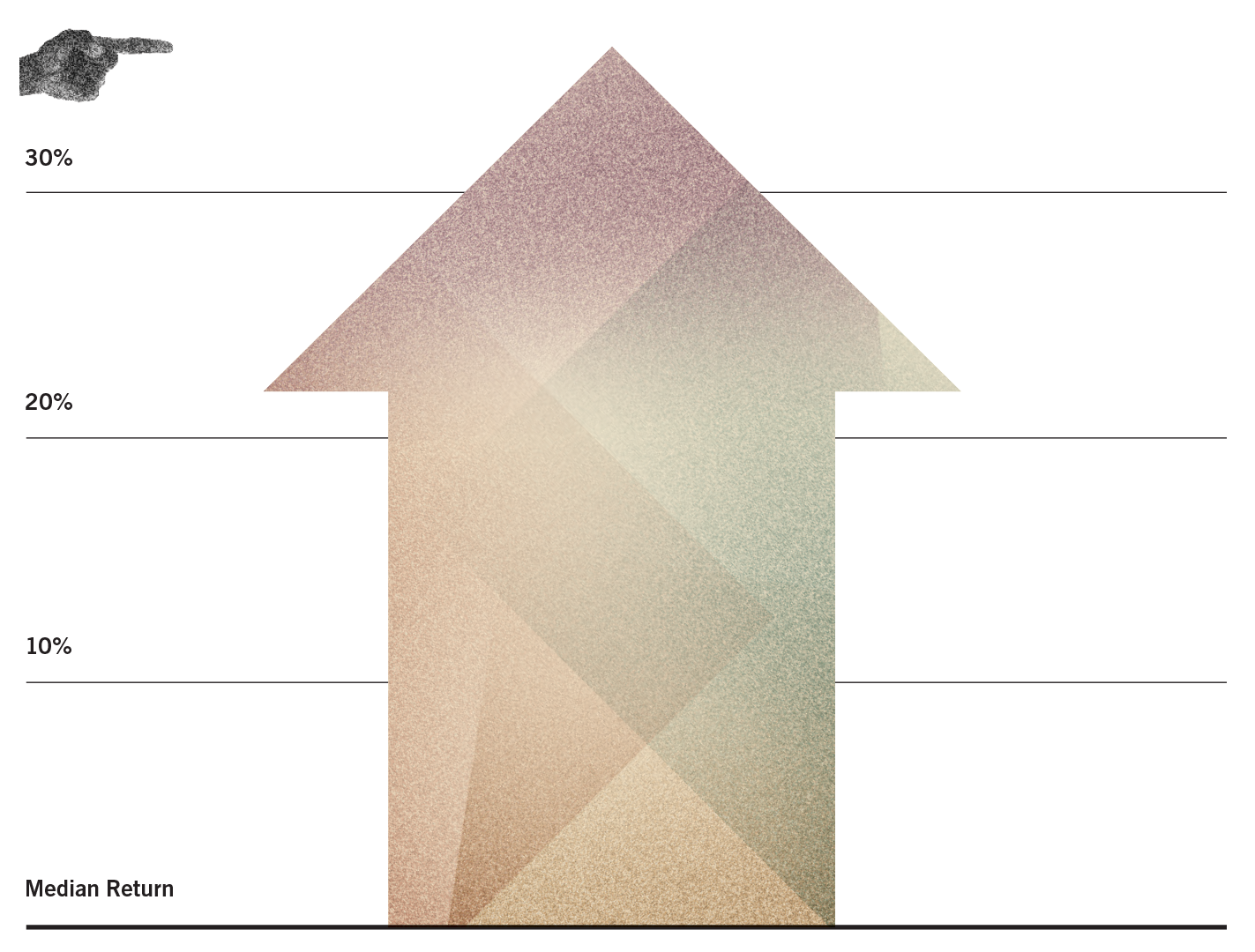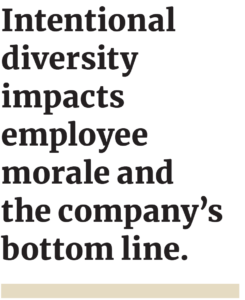Now more than ever, showing proactive and committed action to diversity and inclusion ultimately improves employee engagement, allows for greater productivity, and provides long-term career avenues for employees.
Diversity matters. Ever since Russia led the United States in the space race of the 1960s, good leaders recognize that having the best and brightest minds in a room—solving challenging, complex problems—works better than having a homogeneous group of people who do not have differing opinions or perspectives available to challenge one another.
Diversity allows innovative ideas to rise to the top because diverse thinkers challenge one another and view problems from different perspectives. It allows employees to be more engaged and have greater productivity. And it can have a trickle-down effect as well: As potential clients or customers see your commitment to diversity, they want to be a part of it.
So, not only is it the right thing to do—thanks to other residual benefits, diversity ultimately has a business impact and ends up being good for an organization’s bottom line.
Diversity can be measured with both qualitative and quantitative metrics. What gets measured gets done. The quantitative measures and tangible successes include diversity in recruitment, retention, promotion, and representation in high-ranking positions of an organization and in market impact. It is often the outward measure of how an organization “looks.”
Qualitative measurements can be outcome-oriented or activity-based. Outcome measures focus on how an organization “feels.” This is the level of inclusion felt by all employees. Qualitative measures include reviewing data from employee and customer feedback.
Companies with the highest racial and ethnic diversity are 35 percent more likely to perform above their industry’s national median return.

Quantitative Measures
Diversity in Recruitment: Generally speaking, benchmarking the diversity of your company against the population around your company headquarters is a good way to start measuring your diversity initiatives. If diverse candidates aren’t available in your area, then it is more difficult to recruit them. This usually is not the case in urban areas, but it may be true in rural communities. If that is the case, consider offering other incentives to entice diverse candidates to be the trailblazers to areas outside of the city in exchange for better promotion opportunities, schools, or family life. Analyze the makeup of your competitors as well as the clients you serve, and use that information as a benchmark as well.
Retention: After a company hires a diverse candidate, they must have the infrastructure in place to keep them. The opportunity to learn and advance, to be paid fairly, and to enjoy the colleagues they work with are generally the building blocks for retaining employees. However, employees often stay with companies when they feel they can bring their whole selves to work.
With current events affecting minorities, often in a stressful way, they may be assessing their impact and purpose within the organization and wondering what they can do to participate. Providing an avenue to be able to give back to their community, as well as making them feel comfortable in expressing how these events make them feel at work are important in allowing employees to bring their whole selves to work.
Representation in High-Ranking Positions: Diverse high-ranking executives reflect consistency and commitment on behalf of the organization. Executives often have their pick of other positions, but because they have stayed at an organization for some amount of time, it is a culmination of all the other measures mentioned in this article. This also ends up having a trickle-down effect to other diverse employees in the organization when they see themselves represented in higher positions in the company. These employees are able to see a path to promotion to higher ranking positions and a long-term career, and subsequently become more engaged and hopeful, which leads into the next point.
Promotion: Advancement is often more difficult for diverse candidates because they often do not see a path to promotion. Nobody that looks like them has done it before, so that path is not as clear. If you don’t have the representatives in high-ranking positions as mentioned above, the motivation for those minority employees may not be there since they don’t see anybody that looks like them in those high-ranking positions.
Qualitative Measures
Employee Engagement: Employees must feel they can let their hair down and be their own unique self when they come to work in order to have full engagement and productivity levels. If an individual cannot bring their whole self to work, ultimately other abilities will be stifled. Employee resource groups can be a powerful tool for overall employee satisfaction and level of commitment to an organization. Employee resource groups foster a sense of community and visibility and leverage each unique populations’ networks and skills in order to help accomplish business goals such as market innovation, recruitment and retention of talent, and business development.
Customer Feedback: Customers and clients can be a great source of feedback on your diversity efforts. Do they hire or patronize businesses based on an organization’s commitment to diversity? Even if the answer is “no” directly, it is also important to note that better ideas and work products come from diverse organizations and perspectives, which ultimately leads to providing better service and products to your customers and clients.

More businesses are recognizing how an inclusive environment impacts the bottom line. According to the 2015 report “Diversity Matters” by McKinsey & Co., companies with the highest racial and ethnic diversity are 35 percent more likely to perform above their industry’s national median return. An inclusive workplace also fosters more creativity. When you have different perspectives available to challenge one another, it allows different ways of thinking and ideas to prosper rather than homogeneous thinking. Also, being more attentive to inclusiveness and diversity in your workplace results in lower turnover, better employee retention and satisfaction, and increased productivity.
In order to achieve the full benefits of diversity, companies must be intentional—it won’t just happen. In today’s workplace, top diverse candidates are assessing not only how they can make an impact on the company they work for, but how they can make an impact on their community as a whole.
Ownership of the goals and responsibilities listed above is also crucial and is often ambiguous in many organizations. Executive sponsorship from the top is crucial. Without an executive champion, lower ranking employees are not likely to see it as a priority. But, although executive support and understanding are important, diversity is ultimately a business responsibility.
Employers should welcome the opportunity for employees to be able to talk about issues, experiences, and frustrations that come with working in an environment where certain representatives are one of a few. The reality is that health, productivity, and the feeling of inclusion are affected, so rather than distance the organization from having crucial conversations about race and politics, allowing employees to bring their whole self to work is important for employees’ long-term career and companies’ bottom line.
